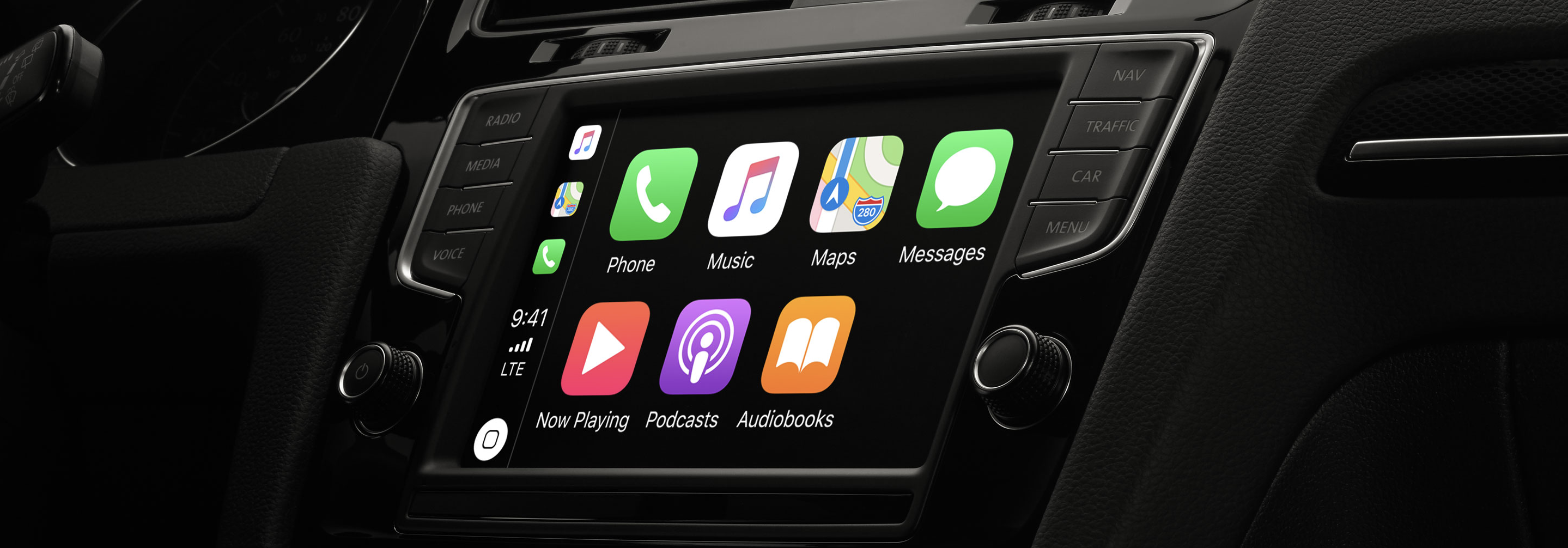Lost in the breadth of this year’s WWDC announcements was an update to CarPlay. That’s to be expected, given just under 1 minute of the 136-minute keynote and only 1 of 153 developer sessions were related to CarPlay.
Despite the limited attention, the update is meaningful and moves the company’s in-vehicle efforts from first to second gear. More importantly, we believe Apple is best positioned over the next 5 years to become the embedded in-vehicle OS market leader, providing developers the platform they need to reinvent the in-vehicle experience.
- Transportation is a massive target for tech disruption. Most of the focus is related to autonomy, but the in-vehicle experience will also be reinvented.
- In the past month, Apple (CarPlay) and Google (Android Auto) announced their most significant updates since their launches 5 years ago.
- From a high level, the CarPlay experience is more polished compared to Android Auto (e.g., UI and voice integration), but both systems offer easy integration of apps and voice between the phone and the car.
- These updates are steps toward a long-term vision of an in-vehicle OS where riders will be unaware if apps are running in the car or on the phone. The experience will be personalized, private, and have a services layer.
- We believe Apple is positioned to edge out Google as the market leader for the in-vehicle OS. This is based on our view that the in-vehicle experience is fundamentally a hardware/software integration problem, closer to Apple’s core competency than it is to Google’s. Also, Apple has made more progress to-date in deploying CarPlay with auto OEMs.
- Today, CarPlay is available in 75% of new cars globally compared to Android Auto in 50%. (Sources: Apple, Google).
The Three Phases of Reinventing the In-Vehicle Experience
First Gear. Linking a phone to a car’s infotainment screen. The first phase began in 2014, allowing a phone to be connected via USB. There have been limited feature updates, as both Apple and Google have focused over the past 5 years on convincing auto manufacturers to add the software as a new car feature. At CES this year Google commented that about 50% of new cars sold globally have Android Auto. Apple mentioned at WWDC that 75% of new cars globally and 90% of new cars sold in the US now have CarPlay.
Second Gear. Expanding the current phone-to-infotainment screen experience with support for multiple displays and Siri integration. We’re just beginning the second phase, with the recent updates and new developer tool announcements. Enabling this shift is the underlying trend that most new cars offer larger and multiple screens. Now, both CarPlay and Android Auto can optimize for these displays, giving the driver a richer interaction with apps. Separately, Apple is advancing voice control with updates that simplify and improve Siri interactions. In terms of timing, availability is dependent on automakers, which means we’ll likely start seeing the software updates later this year into early 2021.
Moving Forward. Embedded software is the undeniable framework for the future of the in-vehicle experience. Given its complexities and the reality that automakers will likely have to choose between CarPlay and Android Auto, we’re 5 years away from the first automaker rolling out embedded software. The user experience in this final phase will be a significant improvement from the second phase, highlighted by four advancements.
- Seamless. The user will not be aware (or care) if apps are running in the car or on the phone.
- Personalized and private. Given cars are shared devices, a “bring it with you” approach will be mandatory.
- Services Layer. Services inside the car is a greenfield opportunity for developers to create new experiences for both drivers and riders. Google has highlighted potential in-car services including media, usage-based insurance, fleet management, and third-party access to your vehicle for package delivery.
- Root vehicle control. This includes voice and software control of root vehicle functions like climate control, cabin lights, seat adjustments, or maintenance alerts.
Disclaimer: We actively write about the themes in which we invest or may invest: virtual reality, augmented reality, artificial intelligence, and robotics. From time to time, we may write about companies that are in our portfolio. As managers of the portfolio, we may earn carried interest, management fees or other compensation from such portfolio. Content on this site including opinions on specific themes in technology, market estimates, and estimates and commentary regarding publicly traded or private companies is not intended for use in making any investment decisions and provided solely for informational purposes. We hold no obligation to update any of our projections and the content on this site should not be relied upon. We express no warranties about any estimates or opinions we make.
